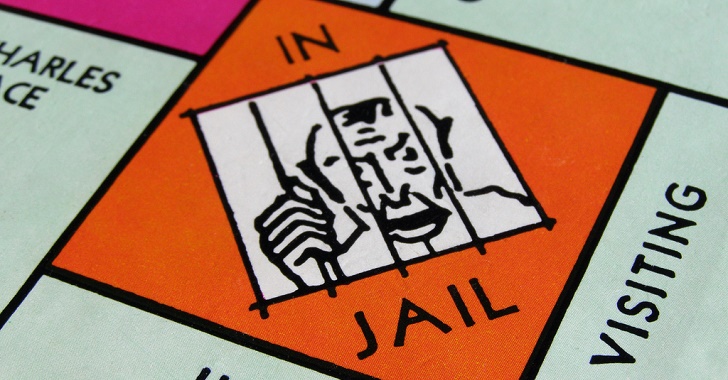 By Carey Wedler
By Carey Wedler
Over the last several years, the United States has earned the troublesome accolade of being the most incarcerated population in the world. Nearly every fourth person behind bars globally resides in the United States. While a new report from the Bureau of Justice, a faction of the DOJ, indicates the number of American inmates recently increased, change might be coming — however slowly. In spite of this potential, the report also details how serious the problem has been — for at least two decades.
According to a report released in December, the total number of incarcerated people in the United States rose by a margin of 1,900 in 2014. However, the increase was not across the board. As the analysis explains, “During 2014, the number of inmates incarcerated in state or federal prisons or local jails increased slightly (up 1,900), reversing a 5-year decline since 2008,” but the number of inmates in prison specifically actually dropped by 1%. Even so, the number of inmates in jail rose 1.8%, ultimately netting a gain (or loss, if you oppose mass incarceration). In 2014, 744,600 inmates were incarcerated in jails, whereas in 2013, there were 731,200 inmates. Further, 2,222,500 total inmates were held in both jails and prisons in 2013, but by 2014, there were 2,224,400 (the increase of 1,900).
This element of the report indicates mixed trends in the U.S. prison population. As the report noted, the drop in prison populations (versus jail or the two combined) “resulted from a decline in the state (down 10,100) and federal (down 5,300) prison populations. This was the second consecutive decline in the federal prison population after peaking in 2012 (217,800).”
While this is good news, other details in the report reveal the severity of the U.S.’ investment in incarceration. The BOJ report found one in 36 Americans (2.8%) was under some sort of correctional supervision in 2014, whether behind bars or in community supervision programs, which include probation and parole. Ultimately, this represents a decline in the total number of people under supervision.
 “After peaking at 7,399,600 persons in 2007,” the report reads, “the correctional population decreased each year by an average of 1.0%. By year end 2014, the population declined by 0.8% to the lowest level observed in more than a decade (6,886,800 in 2003). About 1 in 36 adults in the United States was under some form of correctional supervision at yearend 2014. This was the lowest rate observed since 1996 (5,531,300) when about 1.3 million fewer offenders were under correctional supervision.” (The ACLU has previously documented the rate at 1 in 35, though their report does not provide a source) Despite the widespread attention mass incarceration has received over the last few years, these findings reveal it has actually plagued the United States far longer.
“After peaking at 7,399,600 persons in 2007,” the report reads, “the correctional population decreased each year by an average of 1.0%. By year end 2014, the population declined by 0.8% to the lowest level observed in more than a decade (6,886,800 in 2003). About 1 in 36 adults in the United States was under some form of correctional supervision at yearend 2014. This was the lowest rate observed since 1996 (5,531,300) when about 1.3 million fewer offenders were under correctional supervision.” (The ACLU has previously documented the rate at 1 in 35, though their report does not provide a source) Despite the widespread attention mass incarceration has received over the last few years, these findings reveal it has actually plagued the United States far longer.
The exponential increase in prisoners in the United States has been attributed to a variety of factors over the years. From the the increase in for-profit prisons that often require 90% or higher occupancy rates, to the continued imposition of the Drug War, the prison population skyrocketed. According to the Sentencing Project, a research and advocacy group that campaigns for reform in the prison system, the rate of imprisonment in the U.S. has grown 500% over the last 40 years. The federal prison population ballooned 800% over the last 30 years.
Though the overall number of prisoners rose 0.8% in 2014, the BOJ report highlights partial reason to be optimistic, noting an “overall decline in the correctional population over the past 7 years (down 488,900 offenders),” which includes inmates and those under supervision after being released. Further, only seven of 47 jurisdictions accounted for almost 50% of the correctional population, demonstrating the problem is not even distributed across the country.
In light of recent reforms to drug laws, including the widespread legalization of marijuana, California voters’ 2014 decision to release nonviolent criminals from incarceration, and a similar effort enacted by the Department of Justice, there may be fewer Americans to imprison in coming years.
This article (1 in 36 Americans Are Tied up in the Prison System… And That’s a 20 Year Low) is free and open source. You have permission to republish this article under a Creative Commons license with attribution to Carey Wedler and theAntiMedia.org. Anti-Media Radio airs weeknights at 11pm Eastern/8pm Pacific. Image credit: StockMonkeys.com. If you spot a typo, email edits@theantimedia.org.

Be the first to comment on "1 in 36 Americans Are Tied up in the Prison System… And That’s a 20-Year Low"